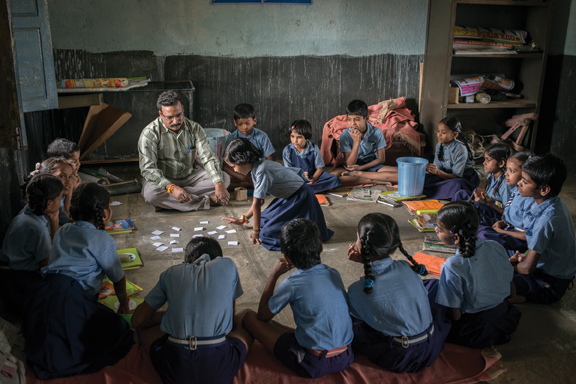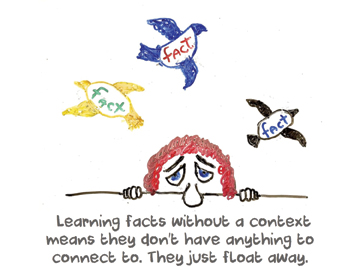Vaidehi Sriram
“What’s your name?”
“Do you like ice-cream?”
“What does your father do?”
“Do you live in a house or an apartment?”
“Do you have a car?”
The questions above are not unfamiliar in the language classroom, especially since the adoption of the communicative approach towards teaching or learning. The communicative approach was born in the Eighties, an approach that lays emphasis on practice in the target language and encourages meaningful interactions based on real-life scenarios. Mistakes are seen as a stepping stone to success and learners discover grammar rules together, rather than being taught explicitly.

The method has undergone many changes and the global pandemic has given rise to new challenges. Teaching has moved online, increasing stress levels for both the learner and the facilitator. It has become challenging to create authentic moments of exchange in the language classroom. With all these factors in mind, it has become more important than ever for the teacher or facilitator to be acutely aware of the context while delivering a lesson.
By definition, being context-sensitive is something that depends on individual circumstances. While a certain lesson might look good in the textbook or the manual, only the teacher knows if it is relevant to his/her classroom. Let us go back to the questions at the beginning of this article and analyze them.
The first question is usually appropriate and in fact, extremely important, under any circumstance. The second question would be welcome too, I reckon, especially on a hot day! Questions on family, living conditions or possessions like cars or houses are widely used, and yet there’s an inherent insensitivity present in them and is bound to make your class a bit apprehensive. These questions make the students very aware of differences and make them feel like they do not belong. It is important to help your learners feel safe and heard in the classroom and they should be given the choice to share as much or as little as they would like about their private lives. These questions can also destabilize the learner so much that their learning is affected.
There are a few strategies that can be used to address this nuance of sensitivity in the classroom. These are strategies that I have tried and they help the student relax while being able to participate in the activity.
a) What does your father do?
Replace this question with a question related to a cartoon character or a famous person. For example, you could ask, “What does Greg Heffley’s father do?” (From the popular series, The Wimpy Kid). Characters from the Harry Potter series or from books that the children are familiar with make the conversation light and yet enable the teacher to achieve his/her objectives.
b) Do you live in a house or an apartment?
c) Do you have a car?

Questions like “Do you have a car?” or “Where is your house?” can be asked in private chat in a virtual classroom or be written on slips of paper that the teacher can correct for grammar or spelling, rather than as a general question addressed to everyone.
Instead you can show a lot of pictures and videos to enable discussion. You will notice that this exercise will usually last longer than a typical Q and A session. Win-win!
Talking about family can also be done through examples of celebrity families. One excellent activity is to create an extraordinary family with many famous people!
For example, “My mother’s name is Sudha Murthy. She is a writer. My father is Albert Einstein. He is a scientist. I have two children, Pinochchio and Tom Sawyer!”
This method allows the teacher to meet all the objectives for the lesson without putting the student in a spot or triggering them. These strategies might seem simple, but they are effective and also increase class participation.
Apart from the specific examples above, it is also important to be aware of where your students come from and what their outlook in general is. Tailoring the content as per their needs will help build a positive classroom. While it is not possible to anticipate every need or potential trigger, the teacher should remain constantly aware of the differences between members in his/her group, and yet keep them all together. Isn’t that what being a teacher is all about?
The author is a teacher and mentor who is extremely passionate about pedagogy. She enjoys long conversations, writing and music. She can be reached at alearninghut@gmail.com and runs her own website at www.alearninghut.com.
